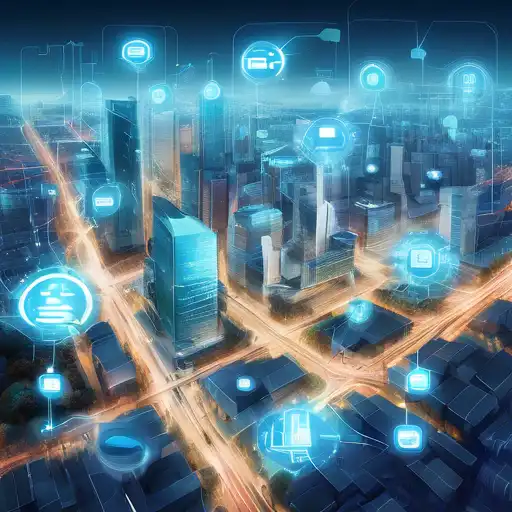Introduction to IoT in Urban Environments
The Internet of Things (IoT) is revolutionizing the way cities operate, making them smarter, more efficient, and more responsive to the needs of their inhabitants. By integrating IoT technologies, urban areas are transforming into smart cities, where data and connectivity improve the quality of life for everyone.
Key Components of IoT in Smart Cities
Smart cities rely on several key IoT components to function effectively. These include sensors, connectivity, data analytics, and user interfaces. Together, these elements enable cities to collect and analyze data in real-time, leading to better decision-making and improved services.
Sensors and Connectivity
Sensors are the eyes and ears of a smart city, collecting data on everything from traffic patterns to air quality. Connectivity, often through wireless networks, allows this data to be transmitted to central systems for analysis.
Data Analytics and User Interfaces
Data analytics tools process the vast amounts of information collected by sensors, turning raw data into actionable insights. User interfaces, such as mobile apps, allow citizens and city officials to interact with these insights, making cities more responsive to their needs.
Benefits of IoT in Smart Cities
The integration of IoT into urban environments offers numerous benefits, including enhanced efficiency, sustainability, and quality of life. Below are some of the most significant advantages:
- Improved Traffic Management: IoT technologies can reduce congestion and improve traffic flow through real-time monitoring and adaptive signal control.
- Enhanced Public Safety: Smart surveillance and emergency response systems can make cities safer for residents and visitors alike.
- Environmental Monitoring: IoT devices can track pollution levels and other environmental factors, helping cities to become more sustainable.
- Energy Efficiency: Smart grids and IoT-enabled buildings can significantly reduce energy consumption and lower carbon footprints.
Challenges and Considerations
Despite its many benefits, the implementation of IoT in smart cities is not without challenges. Privacy concerns, cybersecurity risks, and the need for significant investment are all factors that must be carefully considered.
Privacy and Security
The collection and analysis of vast amounts of data raise important questions about privacy and data security. Ensuring that personal information is protected is paramount.
Investment and Infrastructure
Developing the necessary infrastructure for a smart city requires substantial investment. Cities must weigh the costs against the potential benefits to determine the best path forward.
Conclusion
The role of IoT in smart cities is undeniably transformative, offering the potential to make urban areas more livable, sustainable, and efficient. However, realizing this potential requires careful planning, investment, and consideration of the challenges involved. As technology continues to evolve, the possibilities for smart cities are limitless.
For more insights into how technology is shaping our urban environments, explore our articles on digital transformation and sustainable cities.
